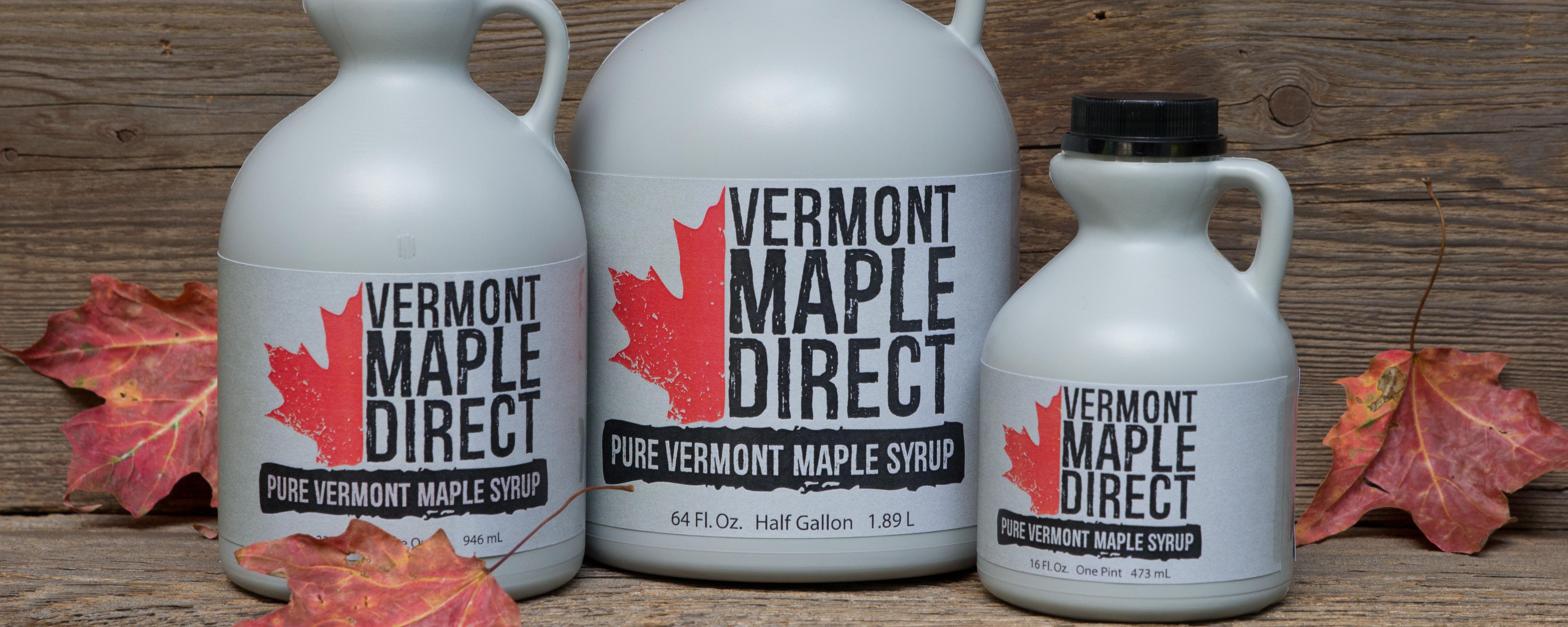
Maple Syrup 411
Everything you always wanted to know about Vermont Maple Syrup... but were afraid to ask.
The Tomahawk and the Tree
Legend has it, the first maple syrup maker was an Iroquois woman, the wife of Chief Woksis. One late-winter morning, the story goes, the chief headed out on one of his hunts, but not before yanking his tomahawk from the tree where he'd thrown it the night before. On this particular day the weather turned quite warm, causing the tree's sap to run and fill a container standing near the trunk. The woman spied the vessel and, thinking it was plain water, cooked their evening meal in it. The boiling that ensued turned the sap to syrup, flavoring the chief's meal as never before. And thus began the tradition of making maple syrup that has flourished for hundreds of years since.
The Craft Syrup Revolution
Sugarmakers today have abandoned the arguably primitive tomahawk method, and replaced it with cutting-edge, timesaving and laborsaving innovations, that produce a maple syrup Chief Woksis could only dream of.
From plastic tubing that carries sap directly from the trees to the sugarhouse; to reverse-osmosis machines that remove water even before the sap enters the evaporator pan; new technologies have come online that preserve the superlative flavor and exceptional quality of Vermont’s maple syrup, while protecting the trees, and the sugarbush for generations to come.
Real, craft maple syrup is a true art form, and a treasure made more extraordinary by the fact that it's only possible to produce it in the northern part of North America. Specific weather conditions combine with the Northern Forest’s unique ecology, providing the ideal conditions that allow the sugarmaker to transform watery sap into authentic, golden maple syrup.
The Grades of Maple
Grade A: Golden Color with Delicate Taste
Grade A: Amber Color with Rich Taste
Grade A: Dark Color with Robust Taste
Each grade of maple syrup embodies the sweet taste that is uniquely maple, and presents itself with a slightly different flavor experience. The subtle caramel and vanilla notes, characteristic of all our syrup, intensify as the color of the syrup deepens, and the maple flavor expands and elevates.
Maple Alchemy - How’s It Made?
Pure Vermont Maple Syrup is made from the sap of a maple tree, plain and simple. The sweet sap produced by the maple tree in late winter and early spring, emerges from the tree at a dilution of about 2% sugar, 98% water. Sap is carried from the trees by a network of plastic tubing and pipe, then collected in large stainless steel storage tanks at the sugarhouse.
Early settlers spent weeks cooking sap down in large pots over open fires. This was an extremely labor intensive and time-consuming process. To the contrary, the modern sugarhouse is a clean, state-of-the-art food production facility. Water is removed from the sap in a two-step process: a reverse osmosis machine separates some of the water before the sap is transferred to the evaporator, where it is then concentrated by boiling until it reaches a density of 66.9% sugar. Finished maple syrup is then filtered and packaged in bottles or large drums.
Sounds simple enough, right? Consider the fact the Vermont Maple Syrup requires freezing nights in the late winter and early spring, preferably 20-30 degrees, and warm days of 40-50 degrees to cause the sap to “run.” It takes roughly three trees and six weeks of these specific weather conditions to produce sap for one gallon of maple syrup; that’s 40 gallons of sap to produce 1 gallon of maple syrup!
Does All Maple Syrup Taste The Same?
The short answer is no. Many factors influence the taste of maple syrup: soil, weather, tree health, location, and the care, quality, and production practices of the individual sugarmaker. Regional variations in flavor tend to be subtle; the greatest contrast in syrup flavor is between the different grades of maple syrup from bright and delicate, to rich and robust.
Is All Maple Syrup Organic?
Maple syrup is made from native trees in a native environment. It is therefore, naturally and inherently organic. Nearly all sugarmakers produce syrup from forests that have never been subjected to fertilizers, herbicides or pesticides. That being said, organic certification does verify that a sugarmaker has adhered to guidelines for sound forest management, water quality, and specific production practices.
Care of Maple Syrup
Maple syrup can be preserved for months, or even years under the proper conditions in an unopened container. Your freezer is the best place to store unopened maple syrup. Maple syrup should be refrigerated once the container is opened. If mold appears, simply skim the mold off the top and reheat the syrup to 200 degrees. This will restore maple syrup to nearly its original flavor.